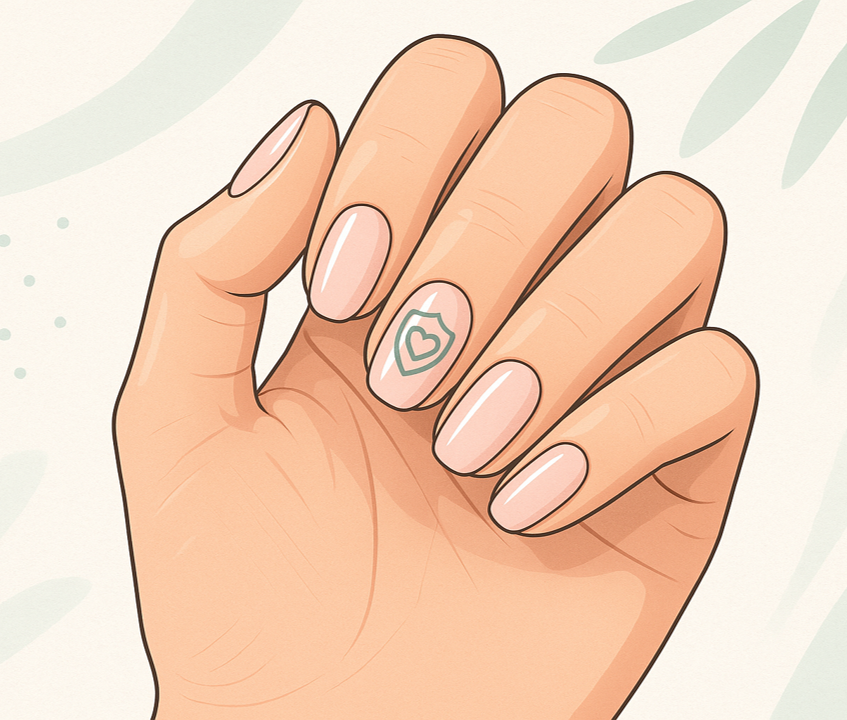
The September Purge: Europe’s War on Hidden Chemical Dangers
The European Union’s total ban on triphenylphosphine oxide (TPO) in cosmetic products, effective September 1, 2025, represents more than regulatory housekeeping—it embodies Europe’s increasingly aggressive stance against chemical ingredients that may pose long-term health risks even when present in trace amounts. This prohibition reflects a fundamental shift in consumer protection philosophy, where the precautionary principle trumps industry convenience and where European regulators are willing to disrupt global supply chains to eliminate substances that most consumers have never heard of but encounter daily.
The TPO Chemical Profile Triphenylphosphine oxide presents a complex regulatory challenge:
Industrial Applications: Widely used as catalyst and flame retardant in various manufacturing processes Cosmetic Function: Serving as stabilizer, antioxidant, and processing aid in beauty products Ubiquitous Presence: Found in everything from lipsticks and foundations to shampoos and moisturizers Trace Concentrations: Often present in minute quantities as manufacturing byproduct rather than intentional ingredient Detection Challenges: Requiring sophisticated analytical methods to identify and quantify
The Health Concerns Scientific research has identified multiple potential risks associated with TPO exposure:
Endocrine Disruption: Potential interference with hormonal systems affecting reproduction and development Skin Sensitization: Allergic reactions and contact dermatitis in sensitive individuals Bioaccumulation: Substance potentially building up in body tissues over time Environmental Persistence: Chemical stability leading to long-term environmental contamination Synergistic Effects: Unknown interactions with other cosmetic chemicals creating amplified risks
The Regulatory Evolution The TPO ban reflects Europe’s increasingly precautious approach to chemical safety:
REACH Regulation: Comprehensive chemical registration and evaluation system identifying problematic substances Cosmetics Regulation: Specific rules governing safety and composition of beauty products Scientific Committees: Expert panels evaluating emerging evidence about chemical risks Stakeholder Consultation: Industry and consumer group input informing regulatory decisions International Coordination: Cooperation with other regulatory agencies worldwide
The Industry Impact Cosmetic manufacturers face significant challenges adapting to the TPO prohibition:
Reformulation Costs: Expensive research and development to replace TPO in existing products Supply Chain Disruption: Need to verify TPO absence throughout complex ingredient networks Testing Requirements: Enhanced analytical testing to ensure compliance with ban Market Timing: Pressure to reformulate products before September 1 deadline Competitive Implications: Companies with TPO-free formulations gaining market advantages
The Consumer Perspective Most cosmetic users remain unaware of TPO presence and the reasons for its prohibition:
Ingredient Literacy: Limited consumer understanding of chemical names and functions Trust Assumptions: Belief that regulated products are inherently safe Price Sensitivity: Potential cost increases from reformulation affecting purchasing decisions Brand Loyalty: Consumer attachment to specific products potentially containing TPO Health Awareness: Growing concern about chemical exposure driving demand for “clean” cosmetics
The Global Implications Europe’s TPO ban influences international cosmetic regulation and trade:
Regulatory Leadership: EU standards often becoming global benchmarks for chemical safety Trade Barriers: Non-compliant products excluded from lucrative European market Harmonization Pressure: Other countries considering similar bans to maintain trade relationships Innovation Incentives: Global companies developing TPO-free alternatives for worldwide use Competitive Dynamics: European companies potentially gaining advantages in TPO-free product development
The Scientific Debate The evidence supporting TPO prohibition remains subject to ongoing scientific discussion:
Risk Assessment: Evaluation of exposure levels versus potential health effects Study Limitations: Challenges in conducting long-term human health studies Mechanistic Understanding: Incomplete knowledge of how TPO affects biological systems Dose-Response Relationships: Uncertainty about safe exposure levels and thresholds Alternative Assessments: Comparative safety evaluation of TPO replacement chemicals
The Precautionary Principle Europe’s approach reflects philosophical commitment to preventing potential harm:
Burden of Proof: Requiring industry to demonstrate safety rather than regulators proving harm Uncertainty Management: Acting on potential risks even without definitive scientific proof Long-term Thinking: Prioritizing future health outcomes over immediate economic considerations Democratic Values: Reflecting European public preferences for strict chemical regulation Risk Communication: Transparent discussion of scientific uncertainty and regulatory rationale
The Enforcement Challenge Implementing the TPO ban requires sophisticated monitoring and compliance systems:
Analytical Methods: Developing standardized testing procedures for TPO detection Market Surveillance: Regular testing of cosmetic products for banned substances Import Controls: Screening products from countries with different regulatory standards Penalty Frameworks: Establishing meaningful consequences for non-compliance Industry Cooperation: Working with manufacturers to ensure voluntary compliance
The Economic Calculations The TPO ban involves complex cost-benefit analysis:
Health Benefits: Potential reduction in allergic reactions and long-term health risks Economic Costs: Industry reformulation expenses and potential price increases Innovation Stimulus: Regulatory pressure driving development of safer alternatives Competitive Effects: Market advantages for companies already using TPO-free formulations Social Values: European willingness to pay for enhanced chemical safety
The Alternative Development Replacing TPO requires identifying safer chemical alternatives:
Functional Equivalents: Chemicals providing similar stabilizing and antioxidant effects Safety Profiles: Comprehensive evaluation of replacement chemical risks Performance Testing: Ensuring alternatives maintain product quality and effectiveness Cost Considerations: Economic viability of TPO replacements for widespread use Innovation Opportunities: Potential for breakthrough technologies eliminating need for chemical additives
The Consumer Education Need Successful implementation requires informed public understanding:
Chemical Literacy: Educating consumers about cosmetic ingredients and their functions Risk Communication: Explaining scientific rationale for TPO prohibition Product Labeling: Clear identification of TPO-free products for conscious consumers Media Coverage: Responsible reporting about chemical risks and regulatory responses Industry Transparency: Manufacturer communication about reformulation efforts and timeline
The International Harmonization Europe’s TPO ban may influence global cosmetic regulation:
Regulatory Convergence: Other countries potentially adopting similar prohibitions Trade Facilitation: Harmonized standards reducing barriers to international commerce Scientific Cooperation: Shared research and risk assessment across regulatory agencies Industry Standardization: Global companies adopting single formulations meeting strictest standards Consumer Protection: Worldwide improvement in cosmetic safety through European leadership
The Technology Innovation The TPO ban stimulates development of advanced cosmetic technologies:
Green Chemistry: Environmentally friendly alternatives to traditional chemical additives Nanotechnology: Novel approaches to product stabilization and preservation Biotechnology: Biological alternatives to synthetic chemical ingredients Smart Formulations: Products adapting to individual skin needs without problematic additives Analytical Advances: Improved methods for detecting and quantifying trace chemicals
The Long-term Vision The TPO prohibition represents broader transformation in cosmetic regulation:
Chemical Minimalism: Trend toward products with fewer synthetic additives Transparency Requirements: Enhanced disclosure of ingredient sources and functions Personalized Safety: Customized products based on individual chemical sensitivities Circular Economy: Sustainable cosmetic production and packaging systems Global Standards: Worldwide convergence on strict chemical safety requirements
The Industry Adaptation Cosmetic companies are developing various strategies for TPO compliance:
Reformulation Programs: Systematic replacement of TPO across product lines Supply Chain Audits: Comprehensive verification of ingredient sources and processing Alternative Research: Investment in developing safer chemical substitutes Consumer Communication: Marketing campaigns highlighting TPO-free formulations Regulatory Engagement: Active participation in policy development and implementation
The Broader Implications The TPO ban reflects changing relationships between regulation, industry, and consumers:
Regulatory Activism: Government willingness to intervene in markets for public health Consumer Empowerment: Informed consumers driving demand for safer products Industry Responsibility: Corporate accountability for long-term health and environmental effects Scientific Integration: Evidence-based policy making incorporating latest research findings Democratic Participation: Public involvement in regulatory decision-making processes
Conclusions:
1. The European Union’s total ban on triphenylphosphine oxide in cosmetic products, effective September 1, 2025, represents far more than the prohibition of an obscure chemical—it embodies Europe’s commitment to protecting consumers from potential health risks even when the science remains uncertain and the economic costs are substantial.
2. This regulatory action reflects a fundamental philosophical shift in how societies balance economic interests against public health concerns. Rather than waiting for definitive proof of harm, European regulators have chosen to act on emerging evidence suggesting that TPO may pose risks to human health and the environment. This precautionary approach prioritizes long-term safety over short-term convenience and industry profits.
3. For consumers, the TPO ban represents both protection and disruption. While most people have never heard of triphenylphosphine oxide, they encounter it daily in products they trust to enhance their appearance and well-being. The prohibition ensures that future cosmetic use won’t expose them to a potentially harmful substance, but it may also result in higher prices, reformulated products, and temporary market disruptions as manufacturers scramble to comply.
4. The cosmetic industry faces significant challenges in adapting to the new reality. Companies must invest heavily in reformulation, supply chain verification, and analytical testing to ensure compliance. Those that have already developed TPO-free alternatives may gain competitive advantages, while others may struggle to maintain product quality and affordability while meeting the September deadline.
5. Perhaps most significantly, Europe’s TPO ban demonstrates the continent’s growing influence over global cosmetic standards. When the world’s largest cosmetic market prohibits a substance, manufacturers worldwide often find it more economical to eliminate that ingredient entirely rather than maintain separate formulations for different markets. This “Brussels Effect” means that European regulatory decisions increasingly shape global product standards.
6. The ban also reflects changing consumer expectations about cosmetic safety. Modern consumers are increasingly sophisticated about ingredient lists, more concerned about long-term health effects, and more demanding of transparency from manufacturers. The TPO prohibition responds to these evolving preferences while potentially accelerating the trend toward “clean” cosmetics with minimal synthetic additives.
7. From a scientific perspective, the TPO ban represents both precaution and uncertainty. While evidence suggests potential risks from TPO exposure, definitive proof of harm remains elusive. This regulatory approach acknowledges that waiting for complete scientific certainty might mean accepting preventable health risks, especially when safer alternatives are available.
8. The September 1 implementation date creates urgency for all stakeholders. Manufacturers must complete reformulation and testing, regulators must prepare enforcement mechanisms, and consumers must prepare for potential changes in their favorite products. The success of this transition will influence future regulatory approaches to emerging chemical risks.
9. Ultimately, the TPO ban symbolizes Europe’s vision of consumer protection in the 21st century: proactive rather than reactive, precautionary rather than permissive, and willing to prioritize long-term health over short-term economic considerations. Whether this approach proves wise will depend on the balance between enhanced safety and economic costs, but it clearly establishes Europe as the global leader in cosmetic safety regulation.
10. The countdown to September 1 has begun, and with it, a new chapter in the relationship between chemistry, commerce, and consumer protection. The TPO ban may be just the beginning of a broader transformation in how societies regulate the chemicals that surround us daily, starting with the products we apply to our skin in pursuit of beauty and well-being.
11. For the companies, who coughed by surprise – we would like to offer help within LIFE FIT FOR REACH Project, where we are offering help in identifying substitutes to the chemicals, which are on the list of Substances of Very High Concern (SVHC). Please register to our contact form:

